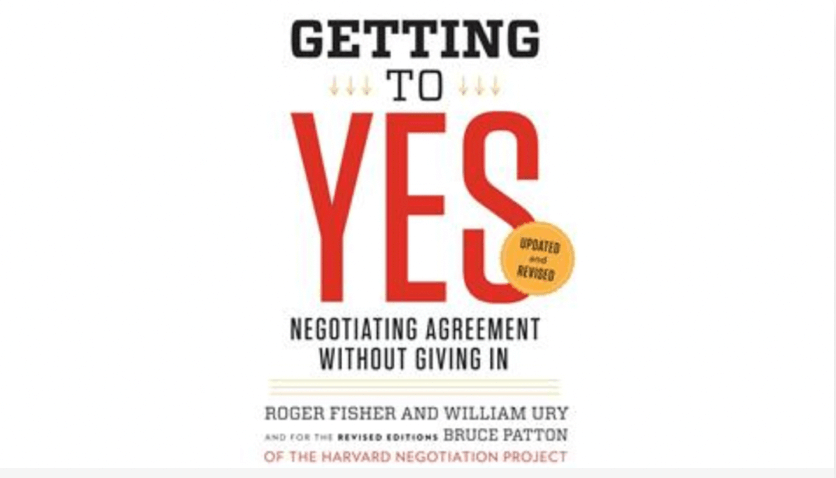Interest Based Negotiation, also known as integrative or principled negotiation, represents a paradigm shift in the approach to negotiations. Originating from the Harvard Negotiation Project in the 1980s, it has significantly influenced various fields, including business, law, and international diplomacy. This blog post introduces you into the concept of interest based negotiation and its practical application, especially in the context of procurement.
Content…
Understanding Interest Based Negotiation
At its core, interest based negotiation aims to uncover and fulfill the underlying interests of the parties involved, rather than merely bargaining over stated positions. Traditional positional negotiation often leads to a zero-sum situation, where one party’s gain is inherently the other’s loss. In contrast, interest based negotiation strives for win-win outcomes, offering mutual benefits.
Key principles of this approach include:
- Separating People from the Problem: This principle encourages negotiators to focus on the issue at hand rather than personalizing the conflict.
- Identifying Interests, Not Positions: It’s vital to understand and address the real interests behind the initial positions presented.
- Generating Options for Mutual Gain: Collaboratively identifying and creating solutions beneficial to all parties.
- Using Objective Criteria: Implementing market values, industry standards, or other impartial benchmarks to evaluate options and reach an agreement.
Application in the Harvard Negotiation Project

The Harvard Negotiation Project has been pivotal in developing frameworks for interest-based negotiation. Notable contributions include:
- “Getting to Yes”: A seminal book co-authored by Roger Fisher and William Ury, introducing a four-step method for principled negotiation. Learn more in LHTS course about Getting to Yes.
- The Mutual Gains Approach: This approach underscores the significance of collaboration and mutual benefits in negotiation.
- The Harvard Negotiation Method: A comprehensive strategy combining principled negotiation, communication skills, and problem-solving techniques.
Critical Analysis of “Getting to Yes”
While “Getting to Yes” has provided a valuable framework for negotiations, its application, particularly in procurement, requires an understanding of its limitations and the need for broader perspectives:
- Emotional Complexity: The book primarily focuses on logic and rationality. However, emotions play a crucial role in decision-making. Understanding and managing emotions is vital in negotiations, especially in procurement where relationships and long-term collaborations are key.
- Cultural Considerations: The framework may not fully capture the intricacies of cross-cultural negotiations, crucial in the global procurement landscape. Different cultures bring diverse negotiation styles, influenced by unique social and business norms.
- Power Dynamics: The book somewhat overlooks the influence of power dynamics in negotiations. In procurement, the relative power of each party, like monopoly suppliers or large-scale buyers, can significantly sway the negotiation process and outcomes.
- Beyond Win-Win: Aiming for win-win outcomes is ideal, but real-world scenarios often present directly opposed interests, necessitating strategies that extend beyond the win-win concept.
Conclusion
In summary, “Getting to Yes” establishes a foundational framework and a shared language for procurement professionals in negotiations. Its principles of fairness, efficiency, and collaboration are broadly applicable. However, a comprehensive understanding of negotiations also requires insights into emotional dynamics, cultural nuances, power imbalances, and complex scenarios where interests may be starkly opposed. A proficient negotiator in procurement should integrate the rational strategies from “Getting to Yes” with a nuanced comprehension of the multifaceted nature of human interactions in negotiations.
Tips for further learning
If you want reading tips regarding negotiation we recommend you to follow Johan Aaro and read this blogpost Leverage on your Negotiation Skills while Commuting. If you want some hand on tips try The Real Life Buyers negotiation tips.
If you want to read a recent publication from Harward, the article “5 Types of Negotiation Skills” from the Program on Negotiation at Harvard Law School discusses various strategies for effective negotiation. It categorizes negotiation tactics into five types:
- Set-up Tactics: Decisions made before negotiations that affect their outcome, like choosing the right parties to negotiate with and the medium of negotiation.
- Value-Creating Tactics: Approaches that seek win-win solutions by adding issues to the discussion for mutual benefit.
- Value-Claiming Tactics: Strategies to claim a fair share of the value in negotiations, including understanding BATNAs (Best Alternative to a Negotiated Agreement).
- Persuasion Tactics: How proposals are presented, including making multiple offers simultaneously and other persuasive techniques.
- Defensive Tactics: Dealing with unethical or hard bargaining moves, building rapport, and preparing defensive strategies.
The article offers a broad-scale approach to negotiation, emphasizing the importance of preparation, collaboration, and effective communication. For more detailed guidance and examples, you can read the full article on the Harvard Law School’s website.
About Learn How to Source.
Learn How to Source is an online platform based in Sweden, offering a range of procurement courses accessible globally. It serves as a community where procurement experts share their knowledge through online courses, designed for various experience levels from introductory to expert.
Courses are concise, about 30 minutes each, and cover different aspects of procurement, tailored for different buyer roles. The courses focus on practical knowledge, presented by seasoned professionals, and include quizzes and certificates. They can be accessed from any device, emphasizing microlearning for flexibility and efficiency.
Note: Illustration to the blogpost “Interest Based Negotiation: your first step as a buyer in training.” are in one case created by Chat GPT and the other case the front page of the book “Getting to Yes”.
